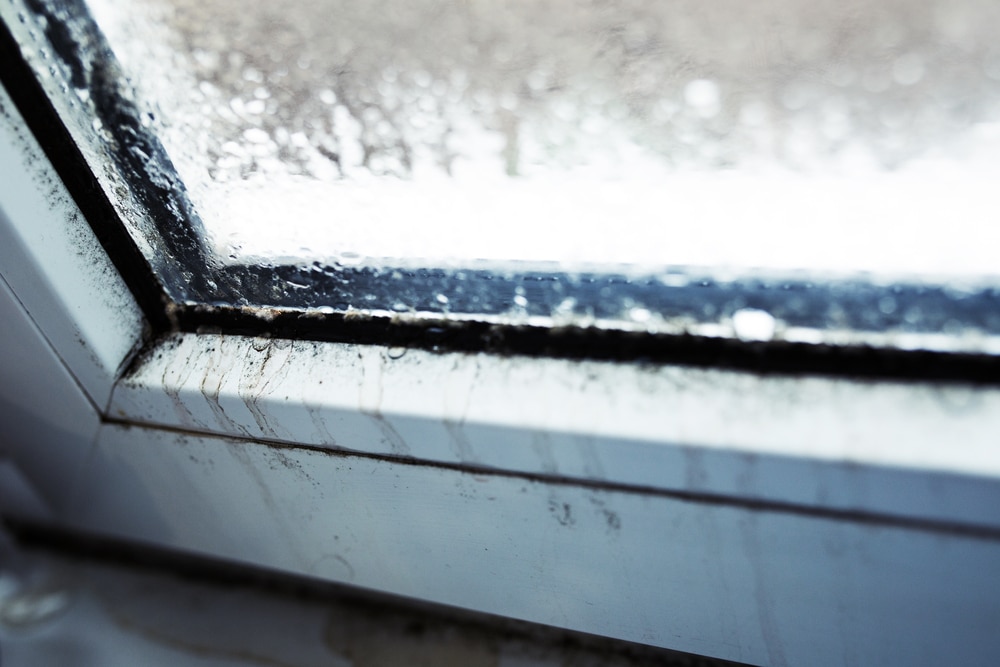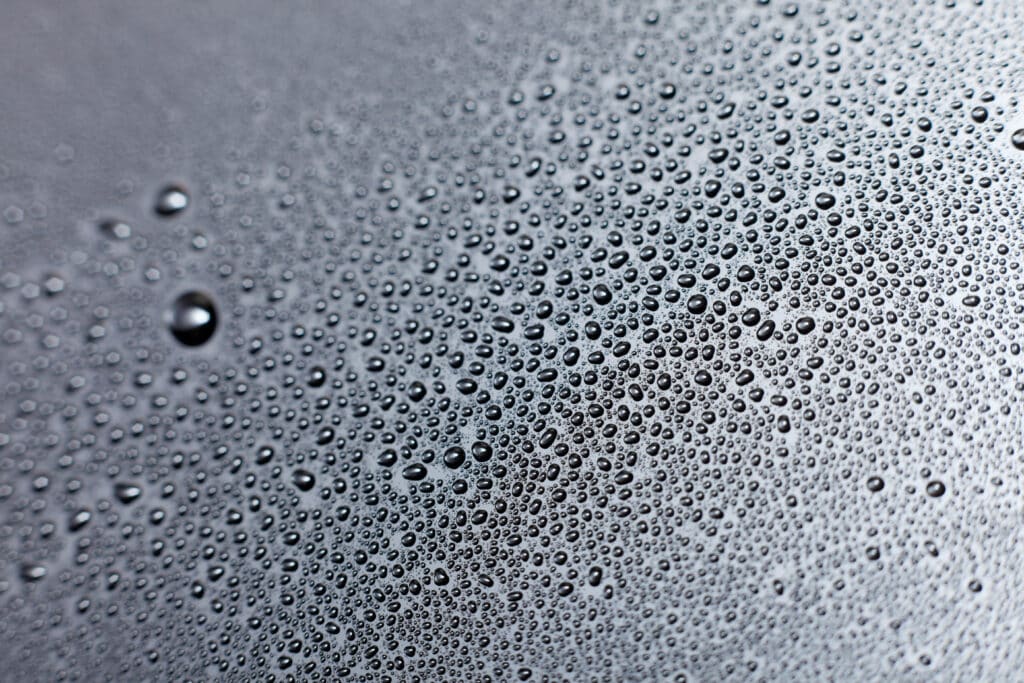
Picture this: It’s a chilly morning, and you’re sipping a cup of coffee or hot cocoa while gazing out your window at the picturesque views of Utah’s natural beauty. But there’s something amiss — your view is obstructed by condensation on your windows.
This is a common issue many homeowners face, and while it may seem mostly harmless, it can lead to more significant problems if left unchecked. In this blog post, we’ll delve into why water condenses on windows and give you practical tips to prevent it.
Understanding Condensation
You’ve probably heard about condensation as part of the water cycle, right between evaporation and precipitation. It’s the process by which water vapor in the air transforms into its liquid state when it encounters a cold surface. In the context of windows, this means that a temperature difference between the outdoor and indoor environments causes water to condense on the glass. Here’s how it happens:
Temperature Differential
One of the most common causes of window condensation is a substantial difference in temperature between the inside of your house and the outdoor environment. In the winter, when the indoor air is warm and humid and the outdoor air is cold, the window glass acts as a barrier. As a result, the warm, moist indoor air cools when it makes contact with the cold glass, causing drops of water to form.
High Humidity Levels
Additionally, high humidity levels indoors can exacerbate condensation issues. The more moisture there is in the air, the more likely it is that it will condense when it encounters a cold surface like a window.
Inadequate Ventilation
If your home has poor ventilation, it can trap moisture in the air, leading to higher humidity levels. When there’s no way for the humid air to escape, the likelihood of it condensing on your windows increases.

Condensation and Your Home
Condensation may seem like nothing more than just a minor inconvenience, but it can have several negative impacts on both your home and your family’s well-being if not properly addressed, including:
- Mold and mildew: Excessive condensation can create an environment that encourages mold and mildew growth. Not only does this affect the appearance of your home, but it can also have adverse effects on respiratory health, especially for those who have allergies or asthma.
- Window damage: Over time, condensation can damage your windows and rot the wooden frames and sills, which can be costly to repair.
- Reduced energy efficiency: Condensation can lead to heat loss through your windows. This means your heating system will have to work harder to maintain a comfortable indoor temperature, resulting in higher energy bills.
Preventing Condensation on Windows
Now that you know why condensation occurs and the risks associated with it, let’s explore some effective strategies to prevent this issue:

Improve Ventilation
Adequate ventilation is a crucial part of reducing indoor humidity levels. Use exhaust fans in moisture-prone areas, such as the kitchen and bathroom, and consider using a dehumidifier to control indoor humidity.
Maintain Consistent Indoor Temperatures
Do your best to keep your home at a consistent temperature. Avoid significant temperature fluctuations, as these can cause water to condense. Programmable or smart thermostats are valuable tools that can help you maintain stable temperatures.
Upgrade Your Windows
If your home’s windows are old or single-pane, consider upgrading to double-pane windows with low-emissivity (Low-E) coatings. These windows provide better insulation along with reducing the temperature differential between the inside and outside of the glass.
Use Weather Stripping
Make sure your windows are well-sealed and prevent drafts by using weather stripping and caulking. This will help maintain a more uniform temperature near the windows.
Install Storm Windows
Storm windows create an additional barrier against the cold outdoor air, helping to keep the inner glass surface warmer.
Use Curtains or Blinds
Closing your curtains or blinds at night creates an insulating layer of air between the window and the room, reducing heat transfer.
Keep Plants Away
Believe it or not, placing indoor plants near your windows can increase humidity levels. Consider relocating them elsewhere in your home.
Monitor and Manage Humidity
A hygrometer is a device used to monitor indoor humidity levels. Consider getting one to help you keep the relative humidity between 30% and 50%.
High-Quality Services From Peak Windows
Although condensation of windows may be a common issue, it shouldn’t be ignored. By addressing the root causes of condensation, you can protect your home from further problems such as mold and mildew.
If your windows could use an upgrade, turn to the experts at Peak Windows. High-quality windows take advantage of modern innovations to save you money on heating and cooling costs in the long run. Don’t let condensation damage your home or obscure your view: take action today to prevent it.

Follow Us